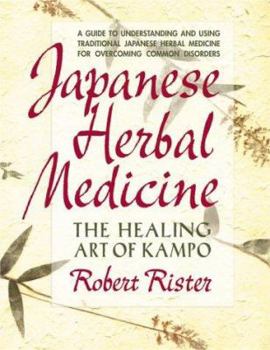Japanese Herbal Medicine: The Healing Art of Kampo
Select Format
Select Condition 
Book Overview
Kampo is ancient system of herbal mixtures designed to cure unique combinations of symptoms that occur in many diseases. The author explores the benefits of Kampo in this comprehensive guide to the use of this healing system.
Format:Paperback
Language:English
ISBN:0895298368
ISBN13:9780895298362
Release Date:March 1999
Publisher:Avery Publishing Group
Length:360 Pages
Weight:2.66 lbs.
Dimensions:1.1" x 8.6" x 11.0"
Age Range:18 years and up
Grade Range:Postsecondary and higher
Customer Reviews
3 ratings
Still the best introduction to Kampo in English
Published by Thriftbooks.com User , 16 years ago
This introduction to Kampo has proven to be of lasting value to students of the field. Although the product references are out of date, Japanese-made products having been available in the US since about three years after the book was published, the basic principles are clearly and soundly presented, and reviewers from Japan, affiliated with Kampo product makers Honso and Tsumura, have long praised the book as the essential introduction to Kampo for Americans. A rather lengthy review below does quote key ideas from the book, for the most part accurately, except that Japanese manufacturers have been eager for American research institutions to use their products in clinical trials, with full disclosure of the standardized formulas, used by every Kampo manufacturer. Also, stand-alone herbal practitioners can still be found in Japan, their products available in pill form, as teas, and in a few instances, as injections.
At last, an Oriental materia medica in English!
Published by Thriftbooks.com User , 23 years ago
I am most enthusiastic about Robert Rister's new book, "Japanese Herbal Medicine: The Healing Art of Kampo". While I am not a practicioner of Kampo (I come from a TCM/Western Herbal background) and cannot judge his portrayal of that system, Rister has written an excellent book for those trying to bridge their understanding of Asian and western herbal databases. My favorite part is the materia medica of 157 herbs and medicinal substances, organized by English common name, with Japanese names in parentheses and an appendix with Chinese, Korean, pharmaceutical and botanical Latin names and additional identification and dosage data. A common problem with American students of Oriental herbal medicine is that they often are unaware that the substances they use are the same as western herbs they may understand- for instancea common form of Wu jia pi (Acanthopanacis) is Siberian ginseng or that modern Mang xiao (Mirabilitum) is Epsom salts. This book allows one to do that.Up to date research on the herbs is presented in clear English, combining new knowledge with traditional uses. Extensive references are in an appendix. I spent several hours cross referencing this book with Bensky's Materia Medica and added as much from one book as to the other. The Kampo book tends not to include animal products used in Chinese medicine, as well as herbs used primarily in external application or against parasites, which accounts for its smaller database. But it includes the most important herbs used in Chinese and Japanese medicine.The book is not organized by Chinese medicinal categories, although functions and indications are described in the text. It does not have a list of tastes, temperatures and channels, but parts of the body affected and organoleptic qualities are included in the text. One annoyance is the lack of a separate multilingual medicinal substance index, but the general index includes herbs by Japanese and English names. Occasionally I had to look up an herb in Bensky, check its Japanese name and refer to the index. One major criticism is that I was not always certain that the research referred to the botanical species used most prevalently in Japanese (and Chinese) medicine (although I admit that I haven't yet spent time digging through the references). And one listing might be given for several parts of a species- like Lotus root, leaf, seed-receptacle, stamen, seed and sprout with the text addressing the various strengths in sketchy detail. Like most other Oriental materia medicas it lacks information on endangered species, cruelty (though few animal products are included) or modern substitutes like Serrulata sheng ma/black cohosh or Typhonium ban xia/pinellia.There are sections on formulas, diseases organized by western name with differential diagnosis within the disease discussions, sources of Kampo goods and services and 65 pages of references. An excellent adjunct materia medica for students of Oriental Medicine.
Highly recommended!
Published by Thriftbooks.com User , 25 years ago
The best book on Oriental medicine I've ever read. Carefully researched, extensively referenced, comprehensive, but written in an easy-to-read style. Excellent resource for herbal medicine!





